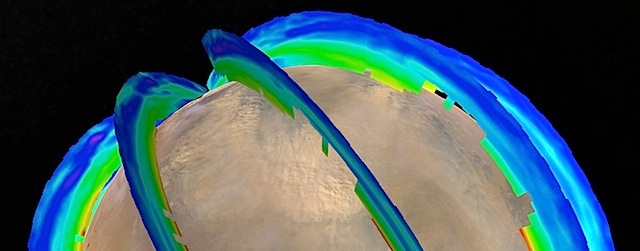 After decades of research to discern seasonal patterns in Martian dust storms from images showing the dust, but the clearest pattern appears to be captured by measuring the temperature of the Red Planet’s atmosphere.
After decades of research to discern seasonal patterns in Martian dust storms from images showing the dust, but the clearest pattern appears to be captured by measuring the temperature of the Red Planet’s atmosphere.
For six recent Martian years, temperature records from NASA Mars orbiters reveal a pattern of three types of large regional dust storms occurring in sequence at about the same times each year during the southern hemisphere spring and summer. Each Martian year lasts about two Earth years.
“When we look at the temperature structure instead of the visible dust, we finally see some regularity in the large dust storms,” said David Kass of NASA’s Jet Propulsion Laboratory, Pasadena, California. He is the instrument scientist for the Mars Climate Sounder on NASA’s Mars Reconnaissance Orbiter and lead author of a report about these findings posted this week by the journal Geophysical Research Letters.
“Recognizing a pattern in the occurrence of regional dust storms is a step toward understanding the fundamental atmospheric properties controlling them,” he said. “We still have much to learn, but this gives us a valuable opening.”
Dust lofted by Martian winds links directly to atmospheric temperature: The dust absorbs sunlight, so the sun heats dusty air more than clear air. In some cases, this can be dramatic, with a difference of more than 63 Fahrenheit degrees (35 Celsius degrees) between dusty air and clear air. This heating also affects the global wind distribution, which can produce downward motion that warms the air outside the dust-heated regions. Thus, temperature observations capture both direct and… [More at link]








